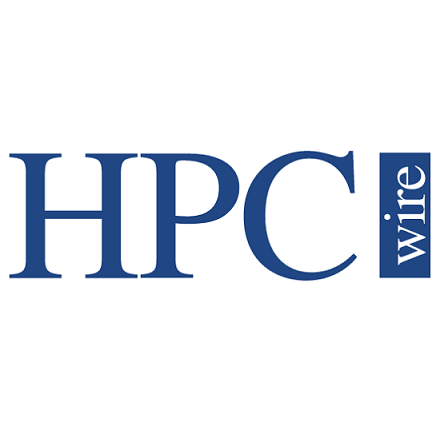
Making Big Ones Out of Small Ones: RNA networks
January 12, 2010
Company offers way to make large-memory x86 machines. Read more…

From Ct to InfiniBand, The Inside Scoop from SC09
January 6, 2010
More videos from HPC's premier event of 2009. Read more…

Two Storage Trends From SuperComputing 2009
December 2, 2009
Small vendors, flash memory on the rise. Read more…

IBM Shows Off Power7 HPC monster
November 27, 2009
Big Blue unveils "Blue Waters" server node. Read more…

SC09 Roundup
November 25, 2009
Before SC09 recedes too far in the rear-view mirror, it's probably worth recapping some of the news connected to the big trends that emerged at the conference. Read more…


Ubiquitous Parallelism and the Classroom
November 20, 2009
The oft-contended best simple statement is that we need ubiquitous parallelism in the classroom. In the near future, most electronic devices will have multiple cores which would benefit greatly from parallel programming. The low hanging fruit is, of course, the student's laptop, and aiding the student to make full use of that laptop. Read more…

Reconfigurable Computing Research Pushes Forward
November 20, 2009
Despite all the all the recent hoopla about GPGPUs and eight-core CPUs, proponents of reconfigurable computing continue to sing the praises of FPGA-based HPC. We got the opportunity to ask Dr. Alan George, who runs the NSF Center for High-Performance Reconfigurable Computing, about the work going on there and what he thinks the technology can offer to high performance computing users. Read more…

- Click Here for More Headlines

Whitepaper
Why IT Must Have an Influential Role in Strategic Decisions About Sustainability
In this era, expansion in digital infrastructure capacity is inevitable. Parallel to this, climate change consciousness is also rising, making sustainability a mandatory part of the organization’s functioning. As computing workloads such as AI and HPC continue to surge, so does the energy consumption, posing environmental woes. IT departments within organizations have a crucial role in combating this challenge. They can significantly drive sustainable practices by influencing newer technologies and process adoption that aid in mitigating the effects of climate change.
While buying more sustainable IT solutions is an option, partnering with IT solutions providers, such and Lenovo and Intel, who are committed to sustainability and aiding customers in executing sustainability strategies is likely to be more impactful.
Learn how Lenovo and Intel, through their partnership, are strongly positioned to address this need with their innovations driving energy efficiency and environmental stewardship.
Download Now
Sponsored by Lenovo
Whitepaper
How Direct Liquid Cooling Improves Data Center Energy Efficiency
Data centers are experiencing increasing power consumption, space constraints and cooling demands due to the unprecedented computing power required by today’s chips and servers. HVAC cooling systems consume approximately 40% of a data center’s electricity. These systems traditionally use air conditioning, air handling and fans to cool the data center facility and IT equipment, ultimately resulting in high energy consumption and high carbon emissions. Data centers are moving to direct liquid cooled (DLC) systems to improve cooling efficiency thus lowering their PUE, operating expenses (OPEX) and carbon footprint.
This paper describes how CoolIT Systems (CoolIT) meets the need for improved energy efficiency in data centers and includes case studies that show how CoolIT’s DLC solutions improve energy efficiency, increase rack density, lower OPEX, and enable sustainability programs. CoolIT is the global market and innovation leader in scalable DLC solutions for the world’s most demanding computing environments. CoolIT’s end-to-end solutions meet the rising demand in cooling and the rising demand for energy efficiency.
Download Now
Sponsored by CoolIT
Advanced Scale Career Development & Workforce Enhancement Center
Featured Advanced Scale Jobs:
HPCwire Resource Library
HPCwire Product Showcase
© 2024 HPCwire. All Rights Reserved. A Tabor Communications Publication
HPCwire is a registered trademark of Tabor Communications, Inc. Use of this site is governed by our Terms of Use and Privacy Policy.
Reproduction in whole or in part in any form or medium without express written permission of Tabor Communications, Inc. is prohibited.

























